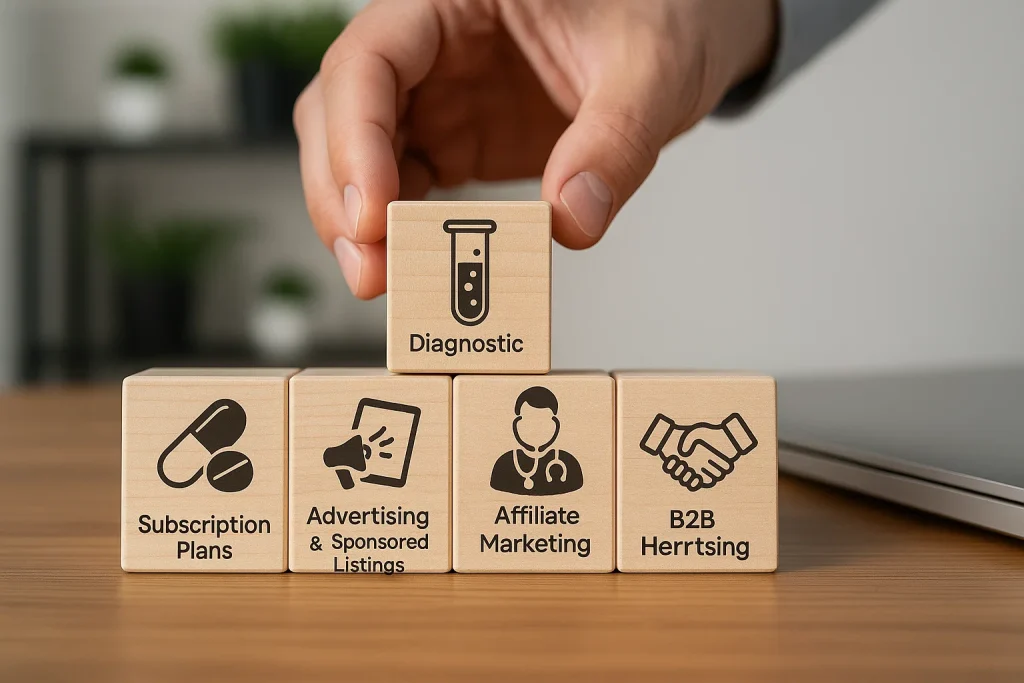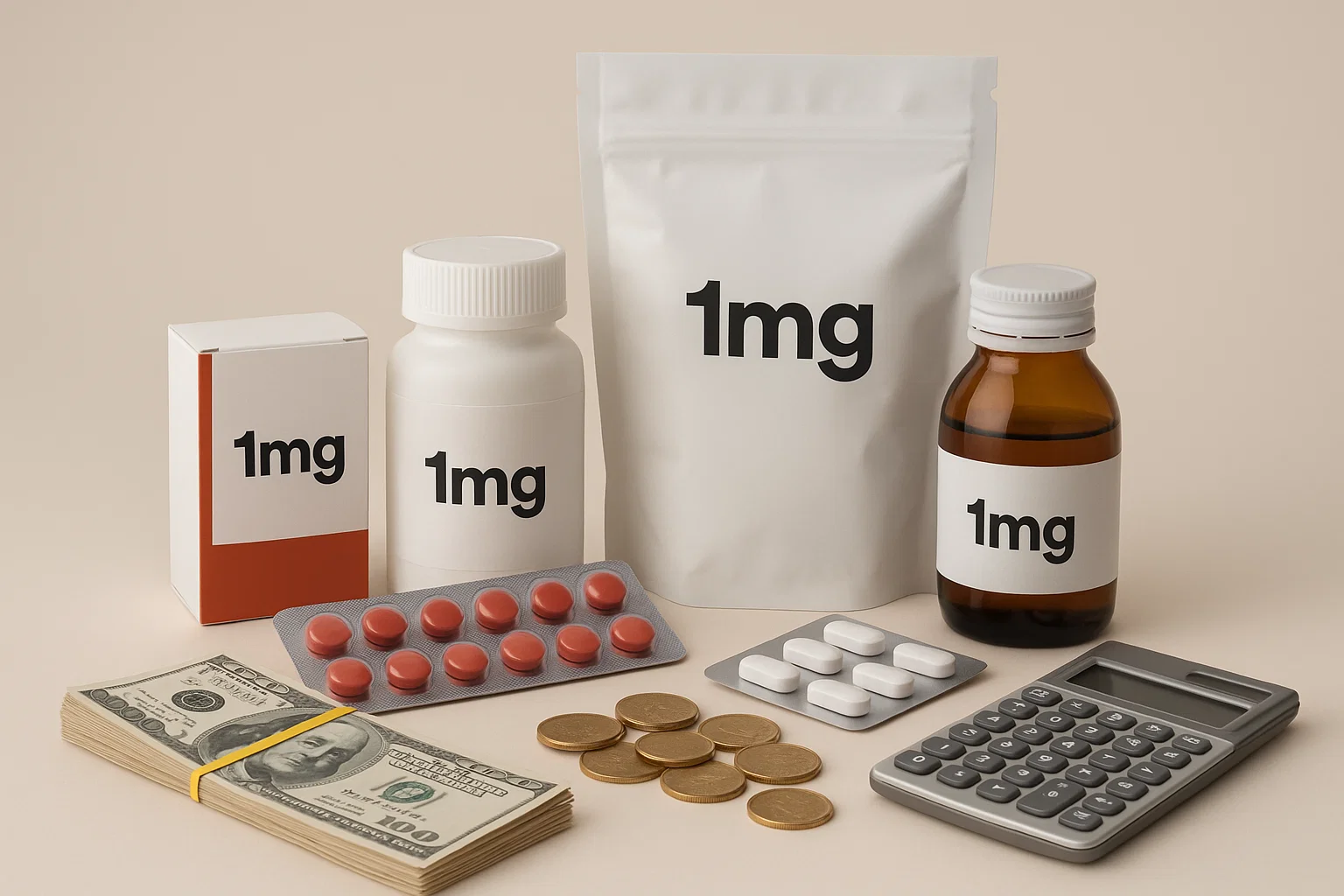1mg has emerged as a leading digital healthcare platform in India, simplifying how people access medicines, lab tests, and doctor consultations. With just a few taps, users can order prescription drugs, get health checkups at home, and consult with licensed medical professionals. 1mg’s user-friendly mobile app and web portal have made healthcare more convenient, transparent, and affordable — especially for urban and semi-urban populations.
But what’s more interesting for entrepreneurs and startup founders is not just how 1mg serves users, but how it earns money.
This blog dives into the revenue model of 1mg, why it works so well in today’s digital-first healthcare landscape, and how startups can replicate this success using ready-made clone solutions from Miracuves. Let’s begin by understanding what 1mg does and the scale at which it operates.
What 1mg Does and Its Market Impact
1mg operates as a full-stack digital health platform that offers:
- Online medicine ordering (prescription & OTC)
- Lab test booking with home sample collection
- Online doctor consultations
- Health content, drug databases, and product comparisons
As part of the Tata Digital portfolio (post-acquisition), 1mg has experienced rapid growth in both user base and operational scale. With over 50 million app downloads, 2500+ diagnostic partners, and delivery service in 1000+ cities, 1mg has built a vast digital healthcare ecosystem in India.
According to industry estimates, 1mg’s valuation crossed $400 million post its acquisition, and it continues to see year-on-year growth as telemedicine and digital health adoption surges.
So why study its revenue model? Because it reveals powerful monetization strategies that work not just in India but globally — especially as digital health becomes a dominant consumer trend post-COVID.
How 1mg Makes Money
Here’s a quick breakdown of how 1mg earns money:
- Medicine Sales (OTC & Prescription) – Margin on product MRP
- Diagnostic Test Commissions – Revenue share from partner labs
- Doctor Consultation Fees – Cut from paid teleconsultations
- Subscription Plans (Care Plan) – Recurring revenue from users
- Advertising & Sponsored Listings – Revenue from pharma and wellness brands
- Affiliate Marketing – Cross-promotions with healthcare partners
- B2B Health Services – Corporate health packages and partnerships
Each of these revenue streams is strategically layered to diversify income, reduce dependency on a single channel, and maximize customer lifetime value. Let’s now explore them in detail.

The future of online pharmacies is here, and 2025 is the year to act. Use this guide to launch your own trusted 1mg alternative.
Detailed Breakdown of Revenue Channels
Medicine Sales (OTC & Prescription)
1mg earns a significant margin on the sale of medicines, both prescription and over-the-counter. It partners with licensed pharmacies and distributors, handling fulfillment either directly or via third-party providers. Typically, 1mg retains a 10–25% margin on each order after logistics and vendor payouts. This is the core revenue driver of the platform.
Diagnostic Test Commissions
Through tie-ups with over 2500+ diagnostic labs, 1mg enables users to book lab tests and health packages from home. The platform takes a commission per test booked, generally ranging from 20–30%. The more premium the test, the higher the revenue share, making diagnostics a highly scalable and profitable vertical.
Doctor Consultation Fees
1mg offers teleconsultations across specialties such as general medicine, dermatology, pediatrics, etc. While some consultations are free (as part of promotional campaigns), users often pay ₹100–₹500 per session, out of which 1mg keeps a platform fee or charges doctors a service commission.
Subscription Plans (Care Plan)
The 1mg Care Plan is a membership program that offers free doctor consultations, discounts on medicines, and priority lab bookings. This monthly or yearly plan brings in recurring revenue and helps retain users longer. With affordable pricing (starting as low as ₹99/month), it’s a strong hook for long-term engagement.
Advertising & Sponsored Listings
Pharma brands and wellness companies often pay 1mg to promote their products through banners, featured listings, and email placements. These sponsored ads are performance-driven and lucrative for 1mg, especially during seasonal peaks or product launches.
Affiliate Marketing
1mg occasionally earns through affiliate partnerships with other healthcare service providers, insurance apps, or wellness platforms. These involve lead generation or service referrals with a fixed payout or commission per conversion.
B2B Health Services
1mg also works with corporate clients, offering customized health plans, employee checkups, and wellness consultations. This B2B wing supports bulk bookings and high-ticket transactions, adding to the platform’s diversified revenue pool.
From online consultations to doorstep medicine delivery, 1mg does it all. Explore these powerful features and see how they can inspire your own app.
Why This Revenue Model Works in 2025
Several market forces make 1mg’s revenue strategy not just viable but highly scalable in 2025:
1. Shift Toward Preventive and Digital Healthcare
Post-pandemic, there’s been a sharp increase in demand for digital health services. Consumers are more proactive about wellness, diagnostics, and teleconsultations. This shift supports ongoing growth in medicine delivery and virtual care — two pillars of 1mg’s monetization.
2. Hyperlocal Delivery and Dynamic Pricing
1mg leverages AI to suggest alternate brands, show cheaper generics, and adjust inventory based on location. These features boost order frequency while optimizing margins. AI-driven recommendations also encourage product bundling, raising average order value.
3. Subscription Economy Boom
With Netflix, Spotify, and fitness apps normalizing monthly billing, users are comfortable paying for health memberships like 1mg’s Care Plan. It’s an ideal model for consistent revenue and better retention.
4. Ad Revenue Is More Relevant Than Ever
In a regulated industry like pharma, brand visibility is gold. With its large user base, 1mg offers advertisers a highly targeted, health-focused audience — a valuable asset for drug manufacturers and wellness brands.
5. Government Support and Digital Penetration
Government push for eHealth (via NDHM and Ayushman Bharat Digital Mission) has made digital health platforms more accepted. Combined with rising internet and smartphone penetration in Tier 2–3 cities, the potential customer base is growing every quarter.
From digital ads to patient-first campaigns, 1mg knew how to connect. Learn the secrets behind its marketing success and apply them to your app.
Can Startups Replicate 1mg’s Revenue Model?
Absolutely — but building a 1mg-like platform from scratch comes with huge challenges:
- Regulatory compliance in pharma and diagnostics
- Building delivery + lab partner networks
- Creating robust, secure health data infrastructure
- Implementing dynamic pricing, e-prescriptions, AI search, and multilingual UX
This is where Miracuves offers a smarter path.
With our 1mg Clone Solution, startups and SaaS founders can launch a white-labeled, feature-rich healthcare platform with all core monetization models baked in — from subscriptions and commissions to lab booking and ad integration. Our clone is fully customizable, HIPAA-compliant, and ready to scale globally.
Instead of spending years and millions in development, you can focus on go-to-market, branding, and building a loyal user base. Plus, we provide post-launch support, integrations, and monetization flexibility tailored to your market.
The 1mg Clone by Miracuves is priced at $2,899, offering a complete online medicine delivery and healthcare platform — ready to go live within 3 days with full app publishing support.
Launching a 1mg-style app starts with the best clone scripts in 2025, grows stronger with a scalable developer’s guide, and becomes successful when you plan ahead using the 1mg app development cost breakdown.
Conclusion
1mg has built a robust digital healthcare business by combining eCommerce, telemedicine, diagnostics, and subscriptions into a multi-stream revenue model. It earns money through medicine margins, lab test commissions, doctor consultations, subscriptions, and advertising — all reinforced by a large and loyal user base.
The good news for entrepreneurs? This revenue model is not exclusive to 1mg. With the right tech foundation and growth strategy, startups can build similar platforms that generate consistent, scalable income in 2025 and beyond.
FAQs
How does 1mg generate revenue?
1mg makes money through medicine sales, lab test commissions, doctor consultation fees, Care Plan subscriptions, advertising, and corporate health services.
Is 1mg profitable in 2025?
While specific financials aren’t fully disclosed, 1mg is backed by Tata Digital and has a diversified monetization strategy, making it well-positioned for long-term profitability.
What are the main income sources for 1mg?
Key revenue streams include medicine margins (OTC and prescription), diagnostic lab commissions, subscription plans, and digital advertising from pharma brands.
Can startups use the same revenue model as 1mg?
Yes, startups can adopt a similar monetization model using customizable 1mg clone apps, which include features like e-pharmacy, lab bookings, and subscriptions.
Does Miracuves offer 1mg clone with monetization features?
Yes, Miracuves provides a ready-to-launch 1mg clone with built-in monetization modules including subscription billing, doctor fees, lab commissions, and ad placements.
Related Articles :-
- Revenue Model of Netmeds: How the ePharmacy Giant Makes Money
- Business Model of Practo: Revenue, Features & Growth Strategy
- Smart Revenue Models for Your Pharmacy Marketplace








